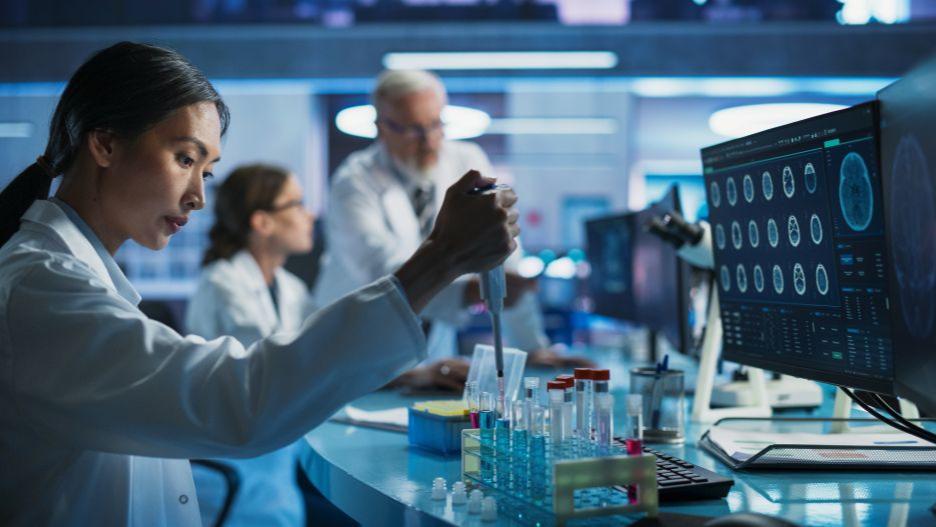There was a time not long ago when the concept of using the body’s immune system to kill cancer cells was considered fringe. That all changed in 2017, when the U.S. Food and Drug Administration (FDA) took the historic action of approving the first cell and gene therapy (CGT) treatment. Since then, 37 additional CGT products have been approved by the FDA, and more than 4,000 cell and gene therapies are in clinical or pre clinical development, according to McKinsey.
CGT involves drawing blood from a patient or universal donor, altering genes in specific types of cells in the blood, and then reinfusing those cells into the patient. Ideally, upon reintroduction into the patient’s body, the altered cells attack the malignant cells without causing the unpleasant and life-altering side effects of chemotherapy or radiation.
In recent years, interest in CGT has exploded, both from hospitals hoping to offer it to their patients and from companies researching new applications for the approach. As the number of players in the CGT space has grown, so has the demand for the highly specialized bio manufacturing facilities needed to produce these therapies. This presents an enormous opportunity for stakeholders in the life sciences real estate sector but also comes with significant challenges.
The intricate process of CGT research and manufacturing
A CGT research lab is not much different from other labs where tissue cultures and blood samples are handled. Work can continue in a lab-scale clean room environment even as it progresses through the first phase of clinical trials. But after that, things get complicated.
Like all drug and biologic products, CGTs must comply with FDA regulations that ensure purity, quality, content, and strength. Unlike most other medicines, however, manufacturing CGTsis largely manual, carried out by scientists in clean rooms rather than on assembly lines.
Because CGTs involve live cells that are extremely sensitive to temperature changes, a cold chain process must be maintained from the moment blood is drawn to when the patient receives treatment. For these reasons, CGT bio manufacturing facilities require are liable supply of power, specialized HVAC systems, cold rooms, and process chemicals. These facilities range in size from under 20,000 square feet to more than 100,000 square feet.
How “bench to bedside” dictates CGT manufacturing hotspots
Once blood is drawn for a treatment, the altered cells must be reinfused into the patient within 24 hours for select therapies. This “vein-to-vein” limit has been a determining factor in where CGT manufacturing has developed.
The first cell and gene therapy approved by the FDA was developed at the University of Pennsylvania’s Abramson Cancer Center, while clinical trials were conducted at the nearby Children's Hospital of Philadelphia (CHOP). This symbiosis is characteristic of other cities where CGT manufacturing has emerged, including Boston, where researchers from Harvard and the Massachusetts Institute of Technology partner with the Mass General Brigham healthcare system, and San Francisco, where the University of California San Francisco uses its hospital network to conduct trials of therapies developed in its labs.
Location challenges and opportunities
For startups hoping to jump on the CGT bandwagon, decisions around real estate can be a significant obstacle. While CGT research can often be carried out in relatively standard lab spaces, transitioning from research to production can be a leap of faith.
Contract development and manufacturing organizations (CDMOs) exist for CGT, but limited capacity can make them cost-prohibitive over the long term. In the Bay Area, for example,the challenges of building new biomanufacturing facilities often outweigh thecost and difficulties of relying on CDMOs.Site selection remains the biggest constraint, as the supply of land zoned for bio manufacturing is low,driving up costs. In addition, securing new electricity service from Pacific Gas and Electric can be lengthy, and water scarcity presents another hurdle.
For ground-up construction, CGT manufacturing facilities must go through local permitting processes and entitlement approvals, which may include environmental impact reports. These steps can take months, and FDA validation of the new facility can add another six to eight months. Altogether, building a new facility can take four to five years.
As a result, many companies in the Bay Area are focusing on Berkeley, Emeryville, Hayward, and Fremont—former industrial areas with single-story buildings that can be modified for CGT manufacturing. Others are opting for shell buildings, leasing, or adaptive reuse of existing spaces.
The Bay Area, a global innovation hub and the U.S. epicenter of venture capital funding, is expected to offer more opportunities as CGT becomes more ubiquitous, treatment costs decrease, and manufacturing processes improve.
Conclusion
Even the skeptics of a quarter-century ago must admit that CGT will play a big role in the future of medicine. But whether you’re an established biotech or pharma company or a newcomer to the field, tackling the real estate challenges of CGT research and manufacturing can be daunting.
The best course of action is to connect with experts who understand both the CGT and life sciences real estate sectors and can advise on solutions that align with your needs, budget, and timeline.
